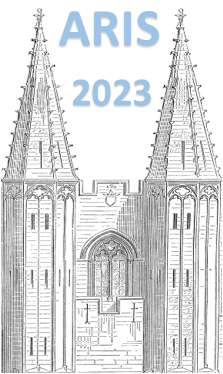Orateur
Description
(1) Department of Physics and Astronomy, Michigan State University, East-Lansing, MI, USA
(2) National Superconducting Cyclotron Laboratory, Michigan State University, East Lansing, MI, USA
(3) Department of Physics, Wittenberg University, Springfield, OH, USA
(4) Department of Chemistry, Michigan State University, East Lansing, MI, USA
(5) Facility for Rare Isotope Beams, Michigan State University, East Lansing, MI, USA
(6) LPC-Caen, ENSI-CAEN, CNRS-IN2P3, Universite de Caen Normandie, Caen, France
Precision measurements in nuclear beta decay offer a sensitive means to search for new physics beyond the standard electroweak model. The new physics signatures are parametrized in terms of exotic phenomenological scalar and tensor interactions, which induce deviations on observables relative to their standard model predictions. It has been recognized that the Fierz interference term is the most sensitive parameter to probe the presence of exotic couplings since it depends linearly on them. This term can directly be accessed through measurements of the beta-particle energy spectrum. These are notoriously difficult to perform with high precision due to distortions generally induced by back- and out-scattering of beta particles.
We report here on the measurement of the energy spectrum of beta particles emitted in 20F decay to extract the Fierz term in this decay for the first time. A 132 MeV/nucleon 20F beam was implanted in a CsI(Na) detector and beta-gamma coincidences were recorded between the implantation detector and four other CsI(Na) surrounding detectors. This configuration enabled us to implement a calorimetry technique such that the dominant distortion of the beta-energy spectrum was due to the bremsstrahlung radiation escaping the implantation detector. The measured decay is the 99.9913(8)% Gamow-Teller branch and the Fierz term is sensitive to exotic tensor couplings.
This contribution will describe the experimental conditions and will provide details on the systematic effects in the data analysis of the spectrum shape. It will also discuss the role of the weak magnetism form factor in the extraction of the Fierz interference term.
This work was supported in part by the US National Science Foundation under grants PHY-1102511, PHY-1506084, PHY-1565546, and PHY-2013557, and by the U.S. Department of Energy, Office of Science, Office of Nuclear Physics, and used resources of the Facility for Rare Isotope Beams (FRIB), which is a DOE Office of Science User Facility, operated by Michigan State University, under Award Number DE-SC0000661.
(*) Present address: Max Planck Institute for Physics, Munich, Germany
(%) Present address: College of Engineering, Michigan State University, East Lansing, MI, USA
(#) Permanent address: LeoLabs Inc., Menlo Park, CA, USA
(&) Permanent address: XIA LLC, Knoxville, TN, USA

